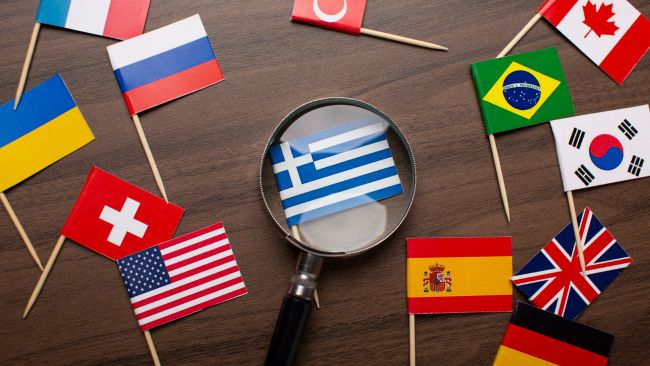Mastering English to Swedish Translation: Best Practices
 Are you a translator looking to sharpen your English-to-Swedish translation skills?
Are you a translator looking to sharpen your English-to-Swedish translation skills?
In this blog post, we will share some best practices for English to Swedish translations. This includes using researching target languages and considering target groups and contexts. Additionally, it is important to consider cultural nuances and dialects when translating from English to Swedish.
By following these best practices, you can make sure to provide the best English to Swedish translations that resonate with the target audience.
Swedish
Swedish belongs to the Scandinavian language family, alongside Danish and Norwegian. Additionally, it has quite a few similarities with English and German. For example, the Swedish alphabet boasts an extra three letters – å, ä, and ö – which aren’t seen in the English one.
You may not be aware, but Swedish is one of the official languages spoken in Sweden and Finland. About 5.5% of the inhabitants of Finland are native speakers of Swedish.
Researching Target Language
Researching the target language is an essential step in any successful translation project. Understanding the cultural and linguistic nuances of the language you are translating into is important, as these can significantly impact how your message is received.
Issues related to this are minimized when the translator is a native speaker of the target language, preferably residing in the country to stay current with language trends.
By researching the Swedish language, translators can better understand its grammar, syntax, and vocabulary. They can also learn more about any idioms or colloquialisms that may be used in the language. This knowledge will help them accurately convey their message in a culturally appropriate and linguistically sound way.
Abbreviations in the Swedish Language
- In general, use the expanded form of a word and avoid abbreviations; however, there may be reasons to use abbreviations in, for example, tables, charts, and graphs.
- Do you need to use uppercase or lowercase letters in abbreviations? For standard abbreviations, you can check what the Swedish Academy’s Glossary (SAOL) says (for example, TV, PC, PS). There is also an official book, “Svenska Skrivregler 2017,” about the Swedish writing rules containing recommendations for how to write and design texts. Having good reference tools like these and industry-specific lexicons, should be part of every professional translator’s toolbox.
- For abbreviations, such as a company’s name, the basic rule is that we use capital letters if the abbreviation is pronounced letter by letter (ABB, IETF, USA) but small letters (with an initial capital letter) if the abbreviation is pronounced as a word (Ikea, Ica).
Context and Target Group
When it comes to English to Swedish translations, it is vital to consider the context and target group of the text. This means that a translator needs to consider who will be reading the translated text and their expectations. Every text has a purpose behind it – the author intends to achieve a goal or objective, be it to educate the audience or to convince them.
It is also important to keep in mind that the target audience can be completely different depending on the context. Imagine the reader as you write. For example, if a text or marketing message targets a young audience, this should be reflected in the message and word choices. If the target group is an older audience, the message should have different word choices that fit better to this age group.
It is important to be aware of the cultural nuances between the English and Swedish languages to make sure to achieve the best possible translation from English to Swedish.
English to Swedish Audio Translation: Local Dialects
It is important to consider the target language’s cultural differences and local dialects for a good English-to-Swedish audio translation. The Swedish dialects can be divided into six major areas.
- Norrland
- Svealand
- Götaland
- Gotland
- Southern Swedish
- Eastern Swedish (Finnish Swedish)
There are also Swedish dialects in Finland: Eastern Swedish dialects and Finnish Swedish. Those who speak Swedish in Finland have not had much contact with Swedes. Therefore, the Finnish Swedish dialects are more archaic than many dialects in Sweden. This means that they have retained words and pronunciations from the past.
In today’s Swedish, it is above all the pronunciation, inflection, vocabulary, or sentence structure that distinguishes different dialects in Sweden. To describe differences between dialect and Swedish standard language, or between different dialects, linguistic variables are used. A variable means that there is variation, for example, that the same thing can be expressed in different ways.
Translators need to be aware of these local dialects when working on an English-to-Swedish audio translation to ensure that their translations are accurate.
Traps to Look Out for in English to Swedish Translation
English-to-Swedish translations can involve potential pitfalls, as subtle nuances and sentence structures must be considered. If not done with care, the translation may convey a different meaning than intended.
Sometimes we have to do verbatim translations so that the Swedish translation will work technically, for example if the job is to translate technical documents. But as much as possible, it is necessary to achieve a language that is fluent in Swedish. It is crucial that the translation is accurate to the source, whether it is technical, law, finance, or medicine. Don’t be afraid to ask your project manager or client for clarification if you do not understand a term or concept or you need more context to accurately translate.
Literal translations are something to be mindful of when working on an English-to-Swedish translation. Errors may occur if English expressions are translated word for word without considering that in the Swedish language, they may need to be written as compound words for the meaning to be accurate and the language structure to have a natural flow.
Working as a Professional English-to-Swedish Translator
Working as a professional Swedish translator can be a very satisfying job. Being a translator entails significant accountability, which is why professional translators are expected to possess extensive knowledge. Here are some general requirements to work as a professional English-to-Swedish Translator:
To be eligible to work as a professional English-to-Swedish Translator, one must have completed formal education in translation, or possess equivalent qualifications in higher education, and have a minimum of two years of verifiable translation experience or at least five years of documented translation experience.
Conclusion – English to Swedish Translation
There is a high demand for English-to-Swedish translations today, as more businesses look to expand their reach into Swedish markets. Swedish speakers are now able to benefit from a wide range of materials in their native language.
So if you are a translator looking to sharpen your translation skills, these best practices can help to ensure that your message is understood and resonates with the intended audience.
Sources:
